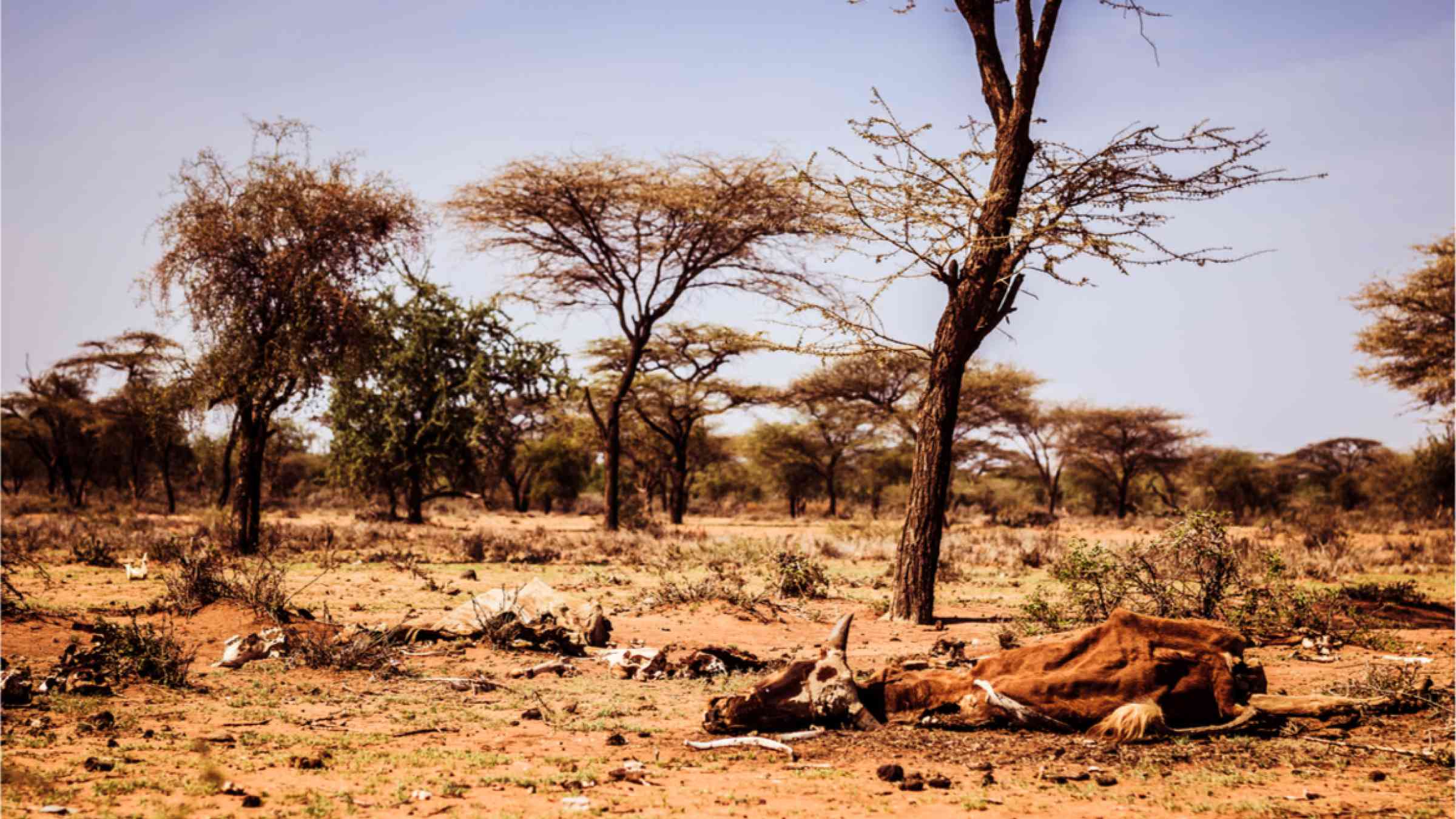Please help us improve PreventionWeb by taking this brief survey. Your input will allow us to better serve the needs of the DRR community.
Relentless drought, fatal flooding: Kenyans find climate solutions under threat of extreme weather

This story includes details about the impacts of climate change that may be difficult for some readers. If you are feeling overwhelmed by this crisis situation here is a list of resources on how to cope with fears and feelings about the scope and pace of the climate crisis.
Praying desperately for rain and preparing determinedly for the next deluge: two poles in Kenya’s deepening battle with the climate crisis.
Children and pregnant or nursing mothers are being hardest hit by Kenya’s latest drought, writes Al Jazeera, a drought which 72-year-old pastoralist Ibrahim Adow described as the worst of his entire life.
While the people of Wajir, a province in the country’s northeast, are accustomed to extended dry spells, the rains always used to come, regular and sufficient to revive desiccated pasture, livestock, and people.
But now, “more frequent and longer droughts are becoming the order of the day,” said James Oduor, director of Kenya’s National Drought Management Authority (NDMA), with the country’s drought cycle seemingly resetting to a three-year rotation, down from its customary five to seven.
This year’s drought has brought with it a massive spike in hunger. Last month, the United Nations projected that 2.4 million Kenyans would be going hungry by November, up one million from February.
“The only hope I have left is for the rain to come,” said 25-year-old Zenab Kule, a mother of two malnourished little boys with another baby on the way.
The other option would be for Kule and her children to walk to where water might be. Citing estimates from the NDMA, Al Jazeera writes that “the average distance to find water in October in the northern county was about 14 kilometres.”
While global heating is surely driving the ongoing drought, Oduor said factors like population growth and loss of grazing lands to urban sprawl have exacerbated its worst impacts. Whereas pastoralists like Adow used to be able to travel with their animals in search of greener pastures, development increasingly makes such nomadic movement impossible.
Government support to help diversify family incomes, as well as water and public health infrastructure, are urgently needed, he added.
In Nairobi, roughly 680 kilometres southwest of Wajir, a small group of volunteers are trying to make their home—the Kenyan capital’s sprawling Kibera slum—more resilient to the flash floods that are likely to inundate it once the long overdue rains do come. Covering some three square kilometres, Kibera is home to roughly 250,000 people.
Every weekend, writes CBC, Faith Ondieki and her fellow members of Weather Mtaanni (Village Weather) survey the narrow streets and alleys of Kibera, digging out and clearing away the garbage and human waste-filled sludge that regularly block essential drainage points.
In the past, in the absence of such dedicated clearing, water levels sometimes rose to waist level during the rains, Ondieki said.
During torrential flooding last year, four people drowned in the slum, and hundreds lost their homes.
Weather Mtaani members also translate weather reports into Swahili and a local slang dialect so that the residents of Kibera, and especially its children, can have fair warning and keep safe.
Describing how Weather Mtaani “began as a pilot project called DARAJA run by the Weather and Climate Information Services for Africa with U.K. funding,” CBC notes that this “simple, but effective” project is one that “many African aid groups watching the UN’s recently concluded COP 26 climate summit in Glasgow say they could benefit from—if better and more transparent financing mechanisms were in place.”
And there’s the rub. “I was expecting to hear a lot more in terms of support to people that are already affected by the impacts of climate change,” said Asha Mohammed, secretary general of the Kenya Red Cross, who attended the conference.
What she heard was further self-interested hedging of bets by wealthy nations on the key issue of loss and damage, accompanied by avowals that the annual US$100 billion in climate financing promised in 2009, and due by 2020, might finally materialize by 2023.
Explore further
Please note: Content is displayed as last posted by a PreventionWeb community member or editor. The views expressed therein are not necessarily those of UNDRR, PreventionWeb, or its sponsors. See our terms of use
Is this page useful?
Yes No Report an issue on this pageThank you. If you have 2 minutes, we would benefit from additional feedback (link opens in a new window).